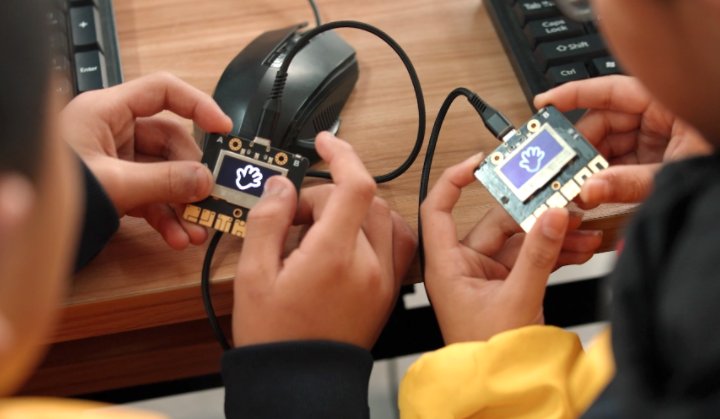Smart Education Makes Programming Accessible to Children in Remote Areas
Enterprise products, solutions & services
Technology enables Dongguan schools to share their rich educational resources with rural classrooms in other provinces, even the remotest of rural schools.
Sometimes in 2023, fifth-grade student Peng Yanxin ran to his dad to announce that he had won a prestigious youth science popularization competition. Peng the pupil has access to big-city resources within his village classroom. He is routinely taught by Tang Lushen, an IT teacher based in Dongguan, Guangdong province, where educational resources are far richer than in Guizhou. Tang’s expertise complements that of the local Tongren IT teacher, Tong Fei. The two-teacher approach delivers results, like the prize Peng earned, that speak for themselves.
“I went to Guizhou in 2022 as a volunteer teacher,” Dongguan’s Tang recalls. “After I returned, I asked myself why we couldn’t share Dongguan’s excellent learning material with Guizhou.”
Tang can still teach in Tongren via a two-way video feed that allows him to monitor the classroom. Technology also enables him to easily share the same teaching material that is available to Guangdong-based educators. In particular, Huawei worked with the city of Dongguan (where one of the company’s largest R&D centers is located) to build two digital education platforms: Guanyixue and Guanjiaotong. The two sophisticated tools, serving 1.8 million students in over 1900 Guangdong schools, contain recorded lessons and an abundance of supplementary materials. The two platforms also enable teachers to monitor the progress of each student, whether it’s onsite in the classroom or remotely. This is one of the reasons that Tang can still be an effective teacher to students in Guizhou even after returning to Dongguan.
Before getting access to the resources that Dongguan now provides, the Tongren elementary school didn’t teach coding to its young students. Now they even learn how to make robots. And even though he’s no longer on site, Tang remains one of the school’s favorite teachers for many students.

For China one of the benefits of spending on rural education is to identify and nurture talent when it’s still young. Tang notes that Peng won second place in an algorithm competition when he was still in 4th grade, competing against students in 6th grade. “He is amazing,” the Dongguan teacher comments.
The two-instructor approach implemented in Tongren with the support of Dongguan digital education platforms allows teachers to go in-depth, as needed, to better support students, observes Chen Aihua, Principal of Huangcaolang Elementary School in Dongguan. It’s this combination of teachers and digital platforms that is effective, she says.
Even though he’s still in elementary school, Peng sees the skills he’s learning as opening new opportunities for him. “If I got to a big company, the skills I have will help for sure.” he says.